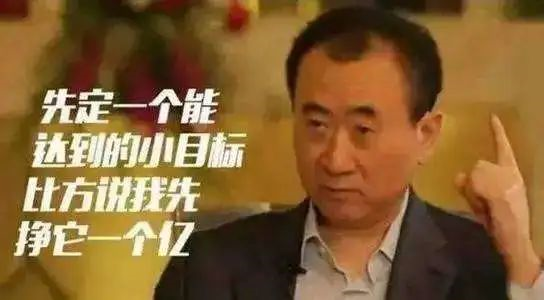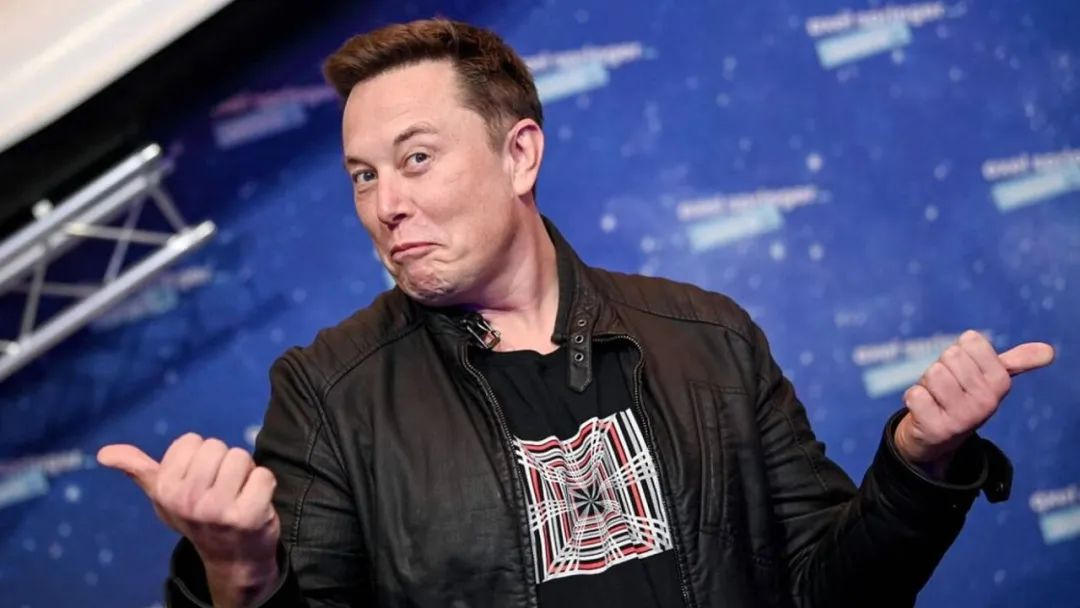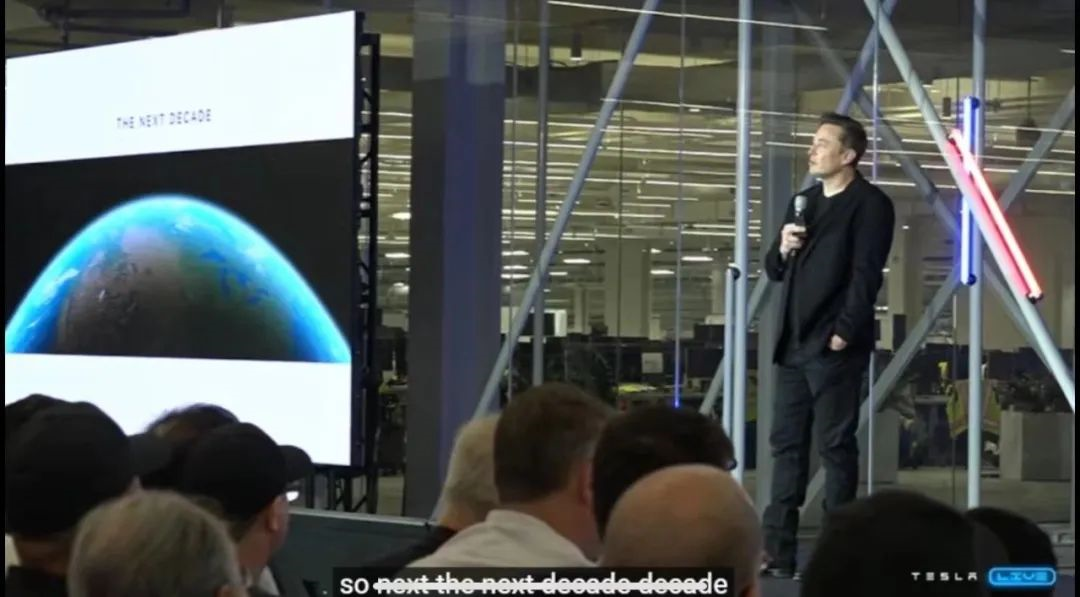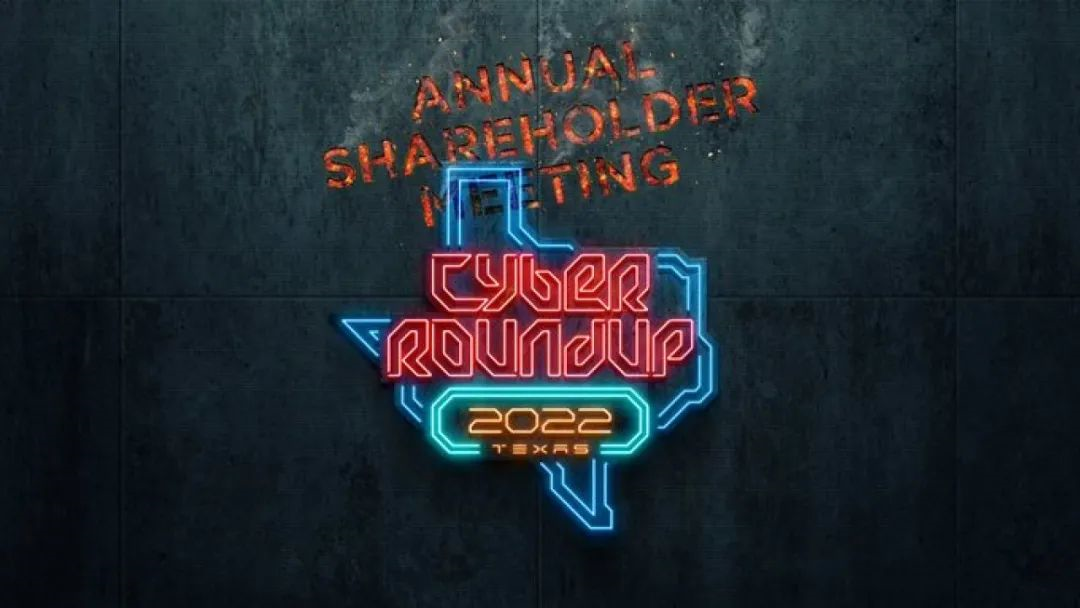Translation in English Markdown
Author: Michelin
A few years ago, when the former richest man Wang Jianlin coined the term “set a small goal that can be achieved,” he certainly didn’t expect us to be so accustomed to hearing about “XX billion” in the news today until I heard Musk say: “Produce 100 million Teslas in the next decade.”
Yes, you read that right, it’s not 100 million dollars, not 100 million yuan, it’s 100 million vehicles.

What does that mean? As the world’s highest-selling carmaker, Toyota sold a total of 10.49 million vehicles in 2021. And producing 100 million Model 3s will cost nearly 30 trillion yuan. Even if Musk’s goal is to become Toyota or Volkswagen of electric vehicles, the target still seems a bit challenging.
Welcome to Tesla’s annual Pie-in-the-Sky conference, no, shareholder meeting. The reason it’s called the “Pie-in-the-Sky conference” is that Musk is so optimistic about the future of the next ten years that he not only set the goal for “100 million vehicles”, but also plans to build “10-12 super factories” with “annual capacity of 20 million vehicles”… In his eyes, Tesla will be the most valuable company on this Earth in the future, bar none.

Perhaps because Musk had previously delivered on his promises, my first reaction when I heard these goals was to think about how to achieve them.
Since it’s a shareholder meeting, let’s start by addressing the most important issue for the shareholders, the stock split. Tesla’s 1:3 stock split plan was formally approved by the vote. Based on Tesla’s current stock price of $925.9, after the split, the stock price is expected to return to the $300+ range, lowering the threshold and increasing liquidity. Judging from the stock price movements before and after the 1:5 split in 2020, it is estimated that there will be another wave of rallies this time. But whether the split will be executed or not is still unknown.
Now that we’ve talked about the stock split, let’s break down the “big pie” Musk made.
The Next Decade: 100 million vehicles, annual capacity of 20 million
At the shareholder meeting, Musk presented a PowerPoint titled “The Next Decade.” Accompanying this was his infinite vision for the future of the next ten years, that includes the ambitious goals that shocked me at the beginning.
 > “I would be surprised if we don’t produce 100 million cars in the next 10 years,” said Musk, who was spurred on by Tesla’s growth curve for deliveries over the past few years.
> “I would be surprised if we don’t produce 100 million cars in the next 10 years,” said Musk, who was spurred on by Tesla’s growth curve for deliveries over the past few years.
10 years ago, Tesla delivered fewer than 3,000 cars, but as of June of this year, they have delivered a cumulative total of 3 million cars. The current production capacity of their four super factories has reached 1.5 million cars, which will increase to 2 million by the end of this year. It is worth noting that just a year ago, in 2021, this number was only 1 million.
Maybe it’s Tesla’s thousand-fold increase in deliveries over a decade, or maybe it’s its doubling of production capacity in just one year, that gives Musk the courage to aim for “100 million cars.”
However, the problem lies in achieving the goal, no matter how lofty it is. Even if the production line of the four super factories runs at full capacity, it won’t be enough to achieve the goal, and new factories are necessary.
“Add one super factory every year in the future.” This is Musk’s plan. Starting with the four existing factories, one new factory will be added each year, ultimately resulting in 10 to 12 super factories, each with a production capacity of 1.5 to 2 million cars. By doing so, they are not far from the goal of producing 20 million cars annually.
When and where will Tesla build its 10th factory? It’s uncertain and far into the future. But the fifth super factory is already in the works.
Since the beginning of this year, the selection process for the fifth super factory has been on the agenda. Recently, many places in China have been vying for Tesla to set up a factory, targeting the location of the fifth super factory. But now it looks like this mystery will need to wait until the end of the year. At the shareholder meeting, Musk responded to Canada, where there was the highest demand for the fifth factory, by saying, “I am half Canadian, so…” But half a sentence from Musk is as good as no answer.
Although the mystery of the fifth factory is still continuing, there is healthy competition among the existing four factories. “The Shanghai factory is still hard to beat,” Musk has repeatedly commend Shanghai’s role as a super factory.After all, Shanghai Gigafactory, with a current capacity of 750,000 vehicles, has already secured its position as the leader in production capacity. However, it is clear that there is still some distance to go before achieving Elon Musk’s goal of “150-200 million production capacity per factory”. It seems that in the coming years, Shanghai Gigafactory will need to continue expanding and optimizing.
“Tesla is the Most Profitable Automotive Company Currently”
If compared to the history, culture, scale, product, and even technology of different automotive companies, opinions might differ. However, when it comes to the title of “most profitable automotive company”, Tesla indeed deserves the recognition.
Ever since it survived the production hell in 2017, Tesla has entered an upward trend. Its net profit of $5.5 billion in 2020 almost covered all of Tesla’s previous net losses.
Musk proudly stated that “FSD hasn’t even been officially released yet,” and in his opinion, the software’s profitability potential from autonomous driving will be Tesla’s greatest future potential, compared to selling cars.
Tesla becoming the most profitable automotive company could not happen without the success of its two popular products, Model 3 and Model Y, as well as continuous technology optimization to reduce costs.
For example, in the production of Model Y at the Austin factory, the previous 171 independent components were simplified into two large castings, reducing 1600 welds, and the number of robots was halved. These technology optimizations have increased Tesla’s single-vehicle gross margin to over 30%.
When Model Y was first released, Musk boasted that it would become the best-selling model. Today, this “big talk” has been mostly realized. As of the end of June, Model Y has sold 164,500 units this year. Based on this trend, it is estimated that Model Y will become the highest-selling single model globally by the end of this year and the highest-selling single model globally next year, proving its profitability.
The Hardcore Robots and FSD Mystery Remain Until AI Day
“I swear that FSD will have results by the end of this year.” After countless delays, Musk once again promised the official release of FSD.Since the release of the Dojo supercomputer on AI Day last year, the development process of FSD has been accelerating. The difficult problem of left turn intersections that previously couldn’t be solved on the internet has now been resolved, and the success rate has reached 96%. The number of Tesla users participating in FSD Beta testing in North America has also exceeded 100,000, with a total driving distance of over 40 million miles.
In Musk’s view, the role of autonomous driving and artificial intelligence is not only to replace drivers but also to improve vehicle collision structure and safety performance. For example, by analyzing and processing data on daily accidents, Autopilot will “predict” whether the accident will occur. If the probability of an accident is 99%, it will activate the safety belt warning and airbag just before the accident occurs to reduce user injuries.
However, compared with FSD, Musk’s expectations are clearly more focused on the robot Optimus. Since its release last year, Musk has been emphasizing the importance of robots. This time, he directly stated: “I don’t understand why analysts don’t understand the importance of Optimus. Its contribution is much higher than that of cars, and the economic system of robots is a manifestation of productivity, with no upper limit.”
What I want to say is, Musk, if you want everyone to understand the importance of Optimus, at least give some information and release some specific progress. This suspense still needs to be revealed at AI Day on September 30.
On the “everlasting topic” of 4680 batteries and Cybertruck:
The next-generation 4680 battery production equipment has been installed at the Austin super factory. The production capacity as of the end of June was 1,000 vehicles per week. Currently, many innovative technologies are still difficult to mass-produce, so it will not be until the end of the year that 4680 batteries can achieve large-scale production.As the production capacity of 4680 batteries climbs, Tesla has also started battery recycling. Currently, about 50 battery packs are recycled each week, which is far from commercialization. The number of scrapped Tesla batteries is also far from being able to supply larger-scale recycling.
However, in Musk’s view, if waste ore can be purified through power battery recycling, the currently scarce raw materials such as lithium ore could be solved, and the essence of battery recycling is still for minerals.
As for the Cybertruck that has been waiting for 3 years, it is still scheduled for production in 2023, but Musk brought both good news and bad news. The good news is that in the next few months, the production equipment for the first Cybertruck will be installed at the Texas factory, and preparations for mass production have reached the final stage; the bad news is that due to the impact of inflation in recent years, the price and configuration of the mass market version of Cybertruck will be very different from when it was released in 2019, and price increases are inevitable.
Finally
From the official release of Model S in 2012 to now, it has been exactly ten years.
I wonder if Musk, ten years ago, had set similar “small goals” for 2022 as he does now. And I wonder if looking at Tesla’s achievements today from the perspective of 2012, like we do now with the “one billion vehicles” goal, would it have seemed just as out of reach?
The goals of the previous ten years have all been achieved; can the goals of the next ten years be achieved as well?
Regardless, Tesla has gone through production hell and years of being underestimated, and electric vehicles have embarked on an accelerating penetration rate. As Musk said, “even if I am abducted by aliens, or returned to my home planet, Tesla will still be doing fine.”
This sentence applies to Tesla and to this era of electric vehicles.
This article is a translation by ChatGPT of a Chinese report from 42HOW. If you have any questions about it, please email bd@42how.com.
